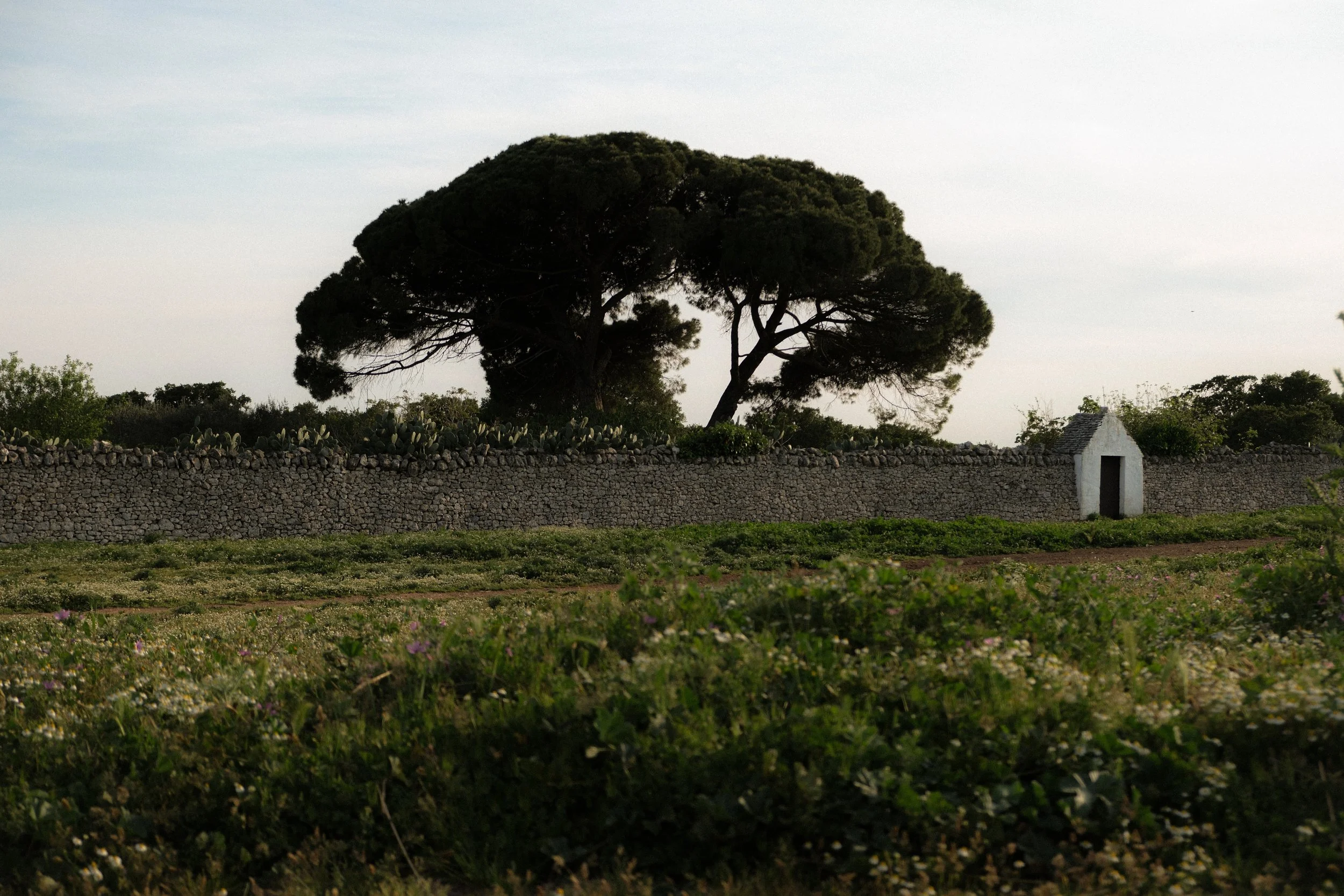
A Sud
(To the south)
sud was started with the simple idea of creating a single classical wardrobe for women and men.
it is derived from the south - a source of classical inspiration, as well as an elegant but easy-wearing style that we seek to develop in our clothing. but it is the south filtered through the north; inflected by a sober northern sensibility that surrounds us in belgium (where sud ORIGINATED). We make our places, after all - but thereafter they make us.
we are lucky to draw on both traditions.
in our first TWO capsuleS we’ve focused on foundational garments that strike a balance between casual and considered: a single-breasted jacket, a pleated, tailored trouser, a chino-inspired trouser and an elegant popover linen shirt. Each piece is made in puglia (or apulia), in the south of italy.
puglia is at the very tip of italy, and has a long and rich history. THE GREEKS AND THE ROMANS, THE BYZANTINES, THE ARAGONESE AND THE SPANIARDS have all left their mark here - particularly the greeks, who LEFT A SOFTER VARIANT OF THEIR STYLE. THEIR WORKS HAVE BEEN DUG UP IN SEAMS AT TARANTO AND BRINDISI; KRATERS AND AMPHORAE AND KYLIXES, TANAGRA FIGURINES, ALL SOFTENED IN THE DROWSE OF THE OLIVE FORESTS. PUGLIA IS GREECE BEFORE GREECE; a prelude of ITS DRY MAJESTY LAID THERE BETWEEN WHITE TOWNS AND THE SEA.
puglia does all sorts, but its wealth is still counted in farmland. It has a prodigy of olive trees; broad and weedy, bulging, bent, snarled, medieval. they sit and dose in their dry groves, seething with cicadas. here’s a coffee-table book idea: a folio of photographs only of puglia’s olive trees, in all their singular, brilliant weirdness and beauty. they are a global treasure. puglia makes a third of all olive oil leaving italy, and more than half of the country’s wine-grapes. it is a land that digs, plants, tends, rakes, presses and licks its fingers.
but puglia also manufactures. it makes beautiful clothing and embroidery, drawing on a rich heritage of handwork. in martina franca, in particular, it has a deep tradition of tailoring, deriving from the fifties and sixties when this smart little town developed its own artisanal industry of men’s and women’s fashion and occasionwear. it husbanded that craft over generations, and today makes some of the finest clothing made anywhere.

martina franca is one of the white towns of the taranto region, together with locorotondo, cisternino and alberobello, who cleave to their baked hills like white sediment. it’s a rococo town of tendrilled, pallid, quietly debauched architecture, uncoiling to the piazza and its stupendous basilica.
its hinterland is an engine of garment-making; there are cutters and button-makers and pressing-shops and hundreds of small workshops (or bottegas). it is intensely manual and small-scale. italy is still a workshop economy, a family economy. in the workshop where we make our jackets, there is still a place for grandpa to sit and slowly draw his patterns.“tutti uguali”, he intones (“all the same”).
in large part, sud was started to rejoice in craft. and you have to see it to appreciate it. our jackets are made in a small workshop of around eight artisans. workshops like these have a very specific but inscrutable order; somehow, by some kind of magic, a garment is made from the stacks of fabric shapes that arrive each day from the cutters, but you never quite know how. there is so much going on disparately and with quiet, tactile expertise, joined by an unspoken process. they have been making jackets here for generations.
it’s difficult to describe the work that goes into a jacket. they are very fiddly garments, with lots of components and areas of judgment. an hour can be spent just making a sleeve, and then another making sure it equates to the other sleeve; and then thirty minutes creating the clever little sewing loop that gathers the sleevehead together for inserting into the armhole. before you know it, a jacket has taken half a day to put together. a workshop like this is scattered with garments in embryo; a lovely linen torso here, a smartly sewn collarpiece over there. the odd arm lying by the sewing bench.

our trousers are also made in martina franca, a few minutes from the jacket workshop - in a small factory where the mood is livelier. trouser-making is more mechanised and up-tempo, and the ladies (as they are mainly ladies) work as if in fast-forward. There’s the constant rattle of sewing and little bursts of steam, as if the machines are exhaling. trouser-making is another multi-component process; to walk around the workshop is to follow a map of a trouser. there’s a section for making the rear pockets; one for making the side pockets; another for the interior belt; another for the front fly. it goes on. only when you see garments made can you understand the technology in them, the astonishing componentry.
eventually the trousers reach the pressing section, where their pleats are pressed in and they’re hung delicately; crisp and perfect. LIKE NEW PAPER.
sud

